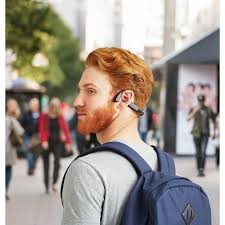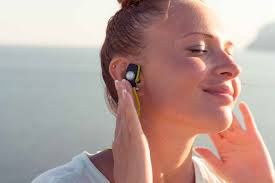Bone conduction headphones are gaining popularity for their unique design and ability to let you hear audio while keeping your ears open. If you’re running, cycling, or just need to stay aware of your surroundings, these headphones offer a fresh alternative to traditional ones. But are they safe? Let’s dive into the details.
What Are Bone Conduction Headphones?
Unlike regular headphones, which rely on speakers that cover or sit inside your ears, bone conduction headphones work by transmitting sound vibrations directly to the bones in your face, particularly your cheekbones. These vibrations travel through the bones to your inner ear, bypassing the eardrum entirely.
This technology leaves your ears open, allowing you to hear external sounds, making bone conduction headphones a popular choice for outdoor enthusiasts who want to remain aware of their environment.
The Safety of Bone Conduction Headphones
Hearing Protection
One of the main concerns with any type of headphones is the potential damage to your hearing. Bone conduction headphones are generally safer for your hearing than regular headphones because they don’t sit inside your ear canal. Since the sound is transmitted through your bones, you’re less likely to suffer from issues like ear fatigue or hearing loss from prolonged exposure to loud music.
However, volume control is still important. Even though bone conduction headphones are designed to bypass the eardrum, listening at high volumes for long periods can still damage your hearing over time. It’s always a good idea to keep the volume at a moderate level and take breaks to give your ears some rest.
Health Concerns
While bone conduction headphones are safe for most people, there are some health considerations to be aware of. Since they rest on your cheekbones, they may cause discomfort if you have sensitive skin or facial issues. If you have any conditions related to your jaw, facial bones, or hearing-related health concerns, it’s worth consulting with a doctor before using them.
Comfort
Bone conduction headphones might feel a bit unusual at first. They don’t sit in your ears or over them, so they rest against your cheekbones. This design can actually be more comfortable than traditional headphones for people who find over-ear or in-ear designs uncomfortable. However, the fit can be tricky depending on your head shape, so it may take some time to adjust.
Related: Top 4 Headphones For Guitar Amp
Do Bone Conduction Headphones Provide Good Sound Quality?

Bone conduction headphones are known for providing decent sound, but they may not match the rich audio quality you get from traditional headphones. The sound may not be as deep or bass-heavy, and they often lack the full immersive experience. That said, they are perfect for casual listening or activities where sound quality isn’t the highest priority.
They also tend to provide more natural sound when compared to traditional earphones, especially in outdoor environments where you still need to hear external noises like traffic or people talking.
Who Should Use Bone Conduction Headphones?
Bone conduction headphones are a great choice for:
- Outdoor Activities: If you run, bike, or walk outdoors and need to hear your surroundings, bone conduction headphones are a solid option.
- People with Hearing Loss: For people with certain types of hearing loss, bone conduction headphones can bypass damaged parts of the ear and provide clearer sound.
- Active People: Whether you’re at the gym or on a hike, bone conduction headphones keep you connected without blocking out the outside world.
They might not be suitable for people who prefer high-quality audio or who have certain medical conditions that affect the jaw or face.
Are Bone Conduction Headphones Good for Your Ears?
One of the biggest advantages of bone conduction headphones is that they don’t block your ear canal, which helps avoid the issues associated with in-ear or over-ear headphones, such as earwax buildup or ear infections. They also reduce the risk of hearing loss, as they don’t rely on sound entering your eardrum.
However, prolonged exposure to high volume levels—even through bone conduction—can still lead to hearing issues over time. It’s important to balance usage and volume levels to protect your hearing in the long run.
How to Safely Use Bone Conduction Headphones
To make sure you’re using bone conduction headphones safely:
- Limit the Volume: Keep the volume at a reasonable level. This will help protect your hearing while still allowing you to enjoy your music or podcast.
- Take Breaks: Give your ears a rest if you’re listening for long periods.
- Check for Comfort: Make sure the headphones fit properly and aren’t causing any discomfort or irritation.
- Related: Top 3 Best Headphones For Small Ears
Conclusion
Bone conduction headphones are generally safe, offering a unique way to listen to music or take calls while keeping your ears open to your surroundings. They’re a good choice for people who want to stay alert during outdoor activities or those with certain hearing issues. Just like any headphones, it’s important to use them at a safe volume and take regular breaks to protect your hearing.

